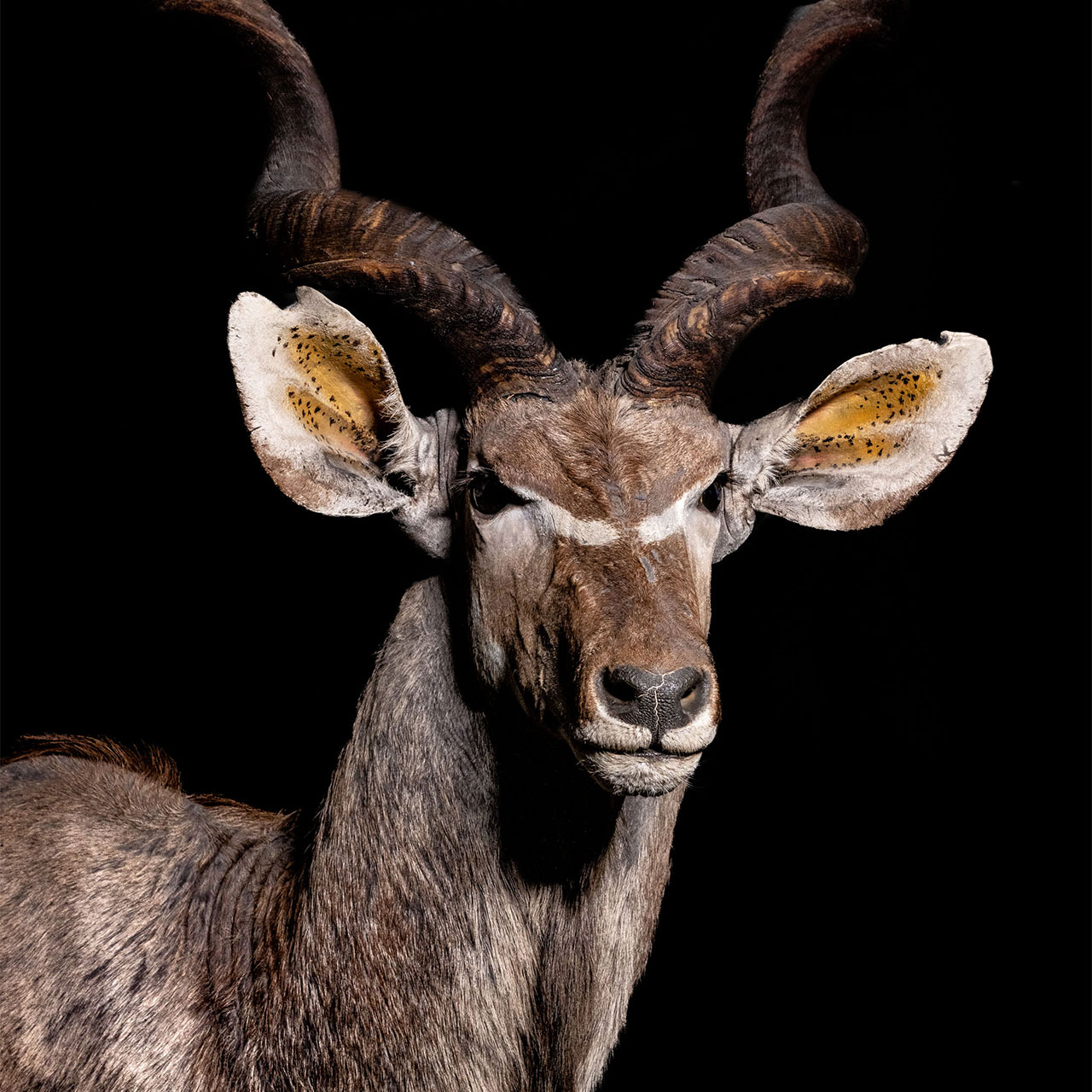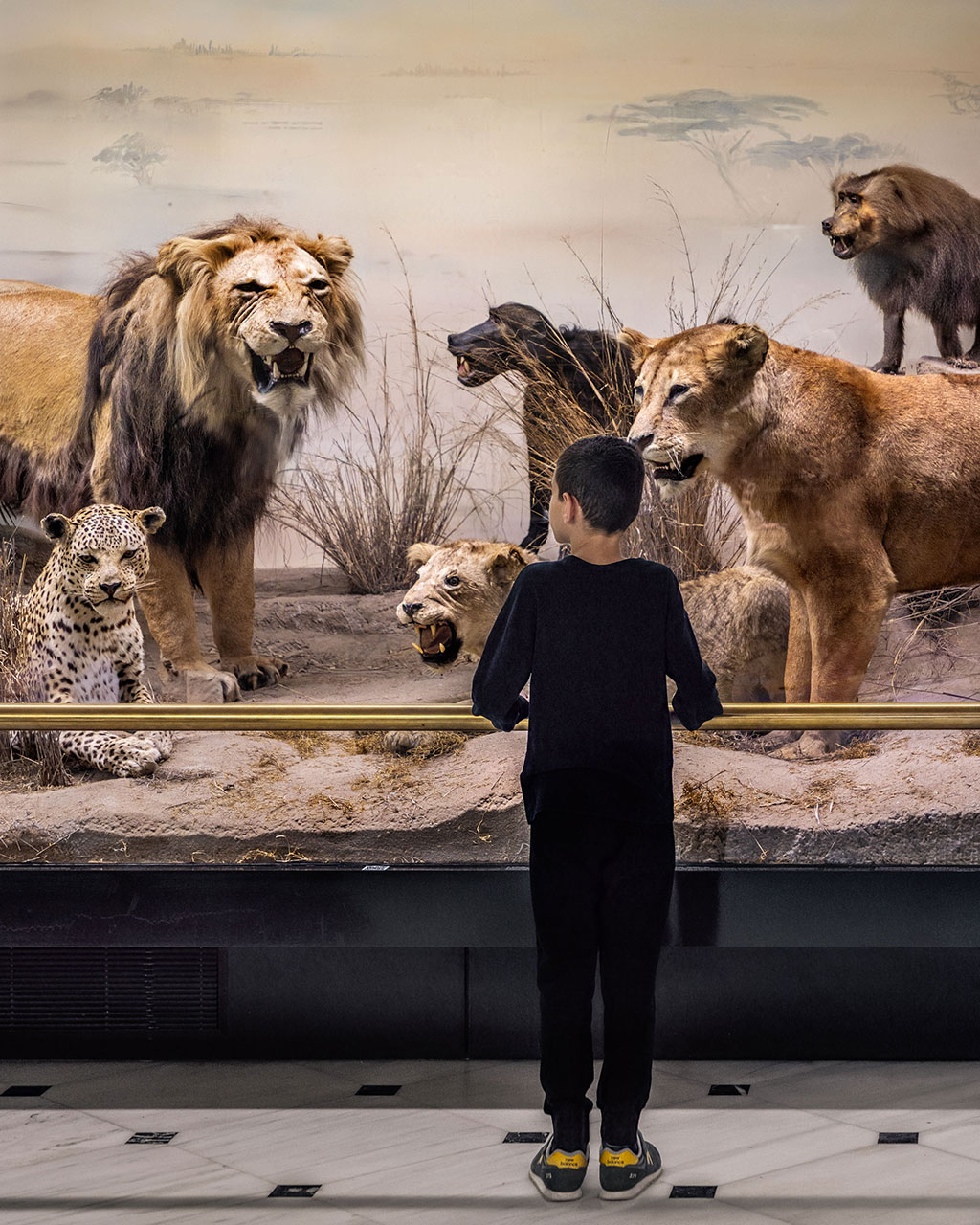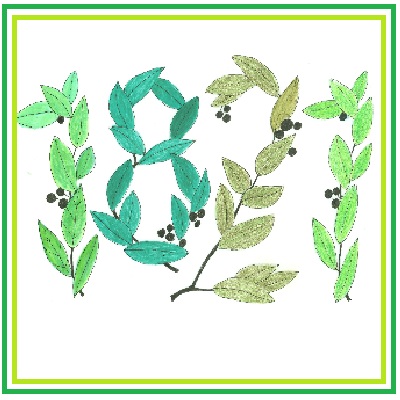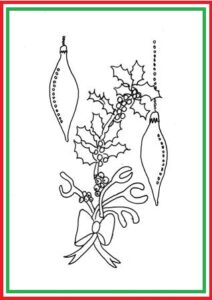
E-Coloring
With e-coloring, the new series of activities for children, the Educational Department brings the animals of the exhibition into your home!
We learn by painting! Print it and start painting!
Each week there will be a different animal for a pleasant, calm and creative occupation for children, in 2 designs: One for younger and one for older ones. In addition to painting, we have interesting facts about each animal. Come to the Museum and get to know them better!
Spotted Flycatcher (Muscicapa Striata)
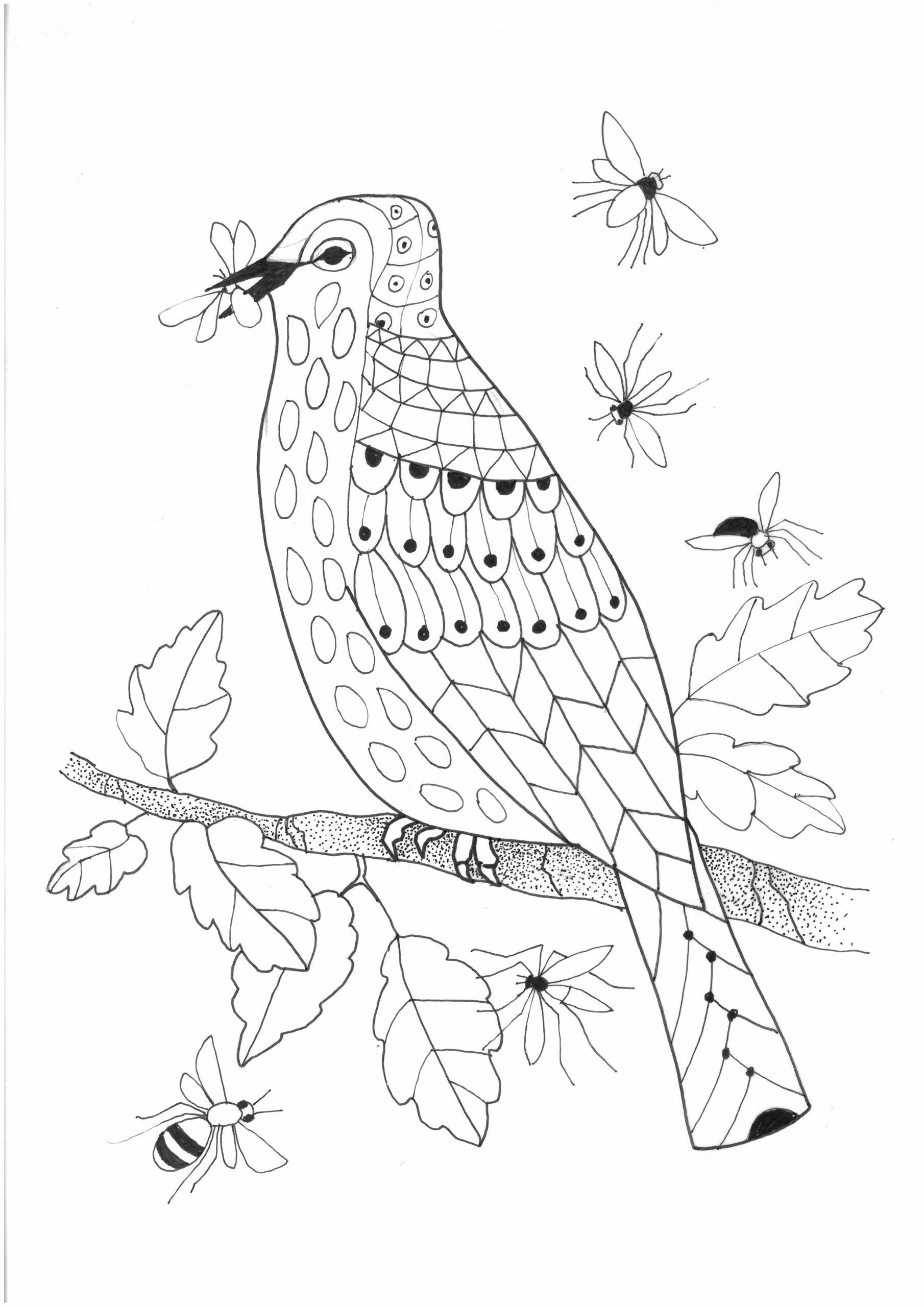
Small bird, approximately the size of a sparrow (13.5-15 cm), with a characteristic upright posture and long wings and tail
It builds its nest in tree hollows, in ruins and on climbing plants
It is a migratory bird, which spends the winter in Africa and comes to Greece (and Europe) in the summer
It eats insects, which are caught in flight, using impressive maneuvers
It lays 3-5 eggs once or twice a year
Mαuve Stinger Or Purple Jellyfish (Pelagia Noctiluca)
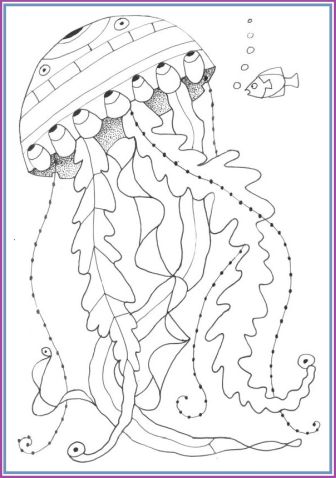
Its scientific name comes from the Greek word pelagos (open sea) and the combination of the Latin words nox (night) and lux(light), which can be described as a marine organism with the ability to glow in the dark.
It mainly feeds on plangtonic crustaceans, salps, fish eggs and larvae, as well as phytoplankton.
While we see it “swimming” in the sea, it is mainly carried by the wind, or sea currents to coastal areas, or even washed ashore.
Both its bell and tentacles are covered in stinging cells.
When it is young, its color is orange-brown and upon maturing, it acquires its characteristic vivid purple color.
It is considered one of the most dangerous jellyfish species in the Mediterranean, with an extremely painful sting, due to a neurotoxin it contains.
The stinging causes symptoms such as intense pain, local redness, swelling and a rash, that can persist for several days.
Tridacna (Tridacna gigas)
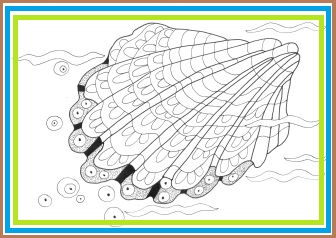
It is also known as the giant clam, as it is the largest clam species, growing to sizes over a meter wide and weights more than 200 kilograms!
The largest species found to date is 1,15 meters wide and weighs 340 kilograms!
It can be found in coral reefs of the Indian and Pacific oceans, in depths around 20 meters.
Its shell comprises of 2 pieces, known as valves. These can open and close when the giant clam needs to feed and reproduce.
It is now considered an endangered species, due to its decreasing populations.
It has an average lifespan of 100 years and more!
Once it settles in a location, it remains permanently attached.
Pheasant
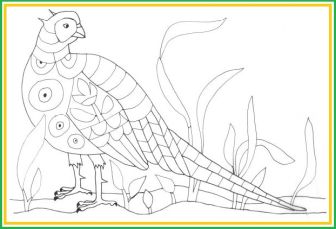
The pheasant, originally from Asia, is a well-known bird since ancient times, as it was considered a fine game.
The length of the male pheasant reaches approximately 80 centimeters and has copper-colored plumage, with black streaks.
The pheasant has strong sexual dimorphism, meaning the male is much more impressive in colors than the female.
Its tail is very long and reaches approximately 40 centimeters. Its feathers are reddish and yellow, with black spots. It has green feathers on its head and a white line on its neck.
It also has a characteristic hoarse voice.
We find it in open forests, in shrubby areas and fields. It feeds mainly on seeds.
When threatened, it prefers to hide rather than fly.
Lynx
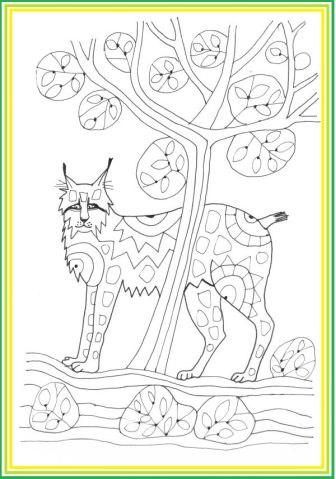
It is a solitary, nocturnal mammal that lives in cold climates.
It has characteristic small black tufts on its ears.
Its legs are strong with wide soles so that they do not sink into the snow.
It walks a lot, withstanding long distances. It jumps and climbs the branches of trees with great ease.
It is a silent animal and only during the mating season does the male call the female with voices.
It is a carnivore: it feeds on small deer, sheep, hares, squirrels, rodents and birds.
Only the male roe deer grows small antlers.
It is a particularly timid animal and moves around during the day, until dusk.
It is herbivorous, and its enemies are mainly wolf and lynx.
Roe deer
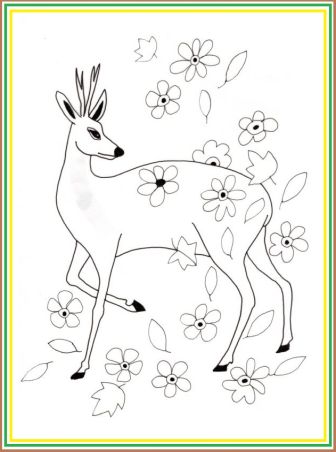
It is a beautiful, agile animal, the smallest of the deer family.
It is reddish – gray brown during summer and grayer during winter.
It has large and erect ears; its muzzle is black and around the base of the tail it has a large white spot.
Only the male roe deer grows small antlers.
It is a particularly timid animal and moves around during the day, until dusk.
It is herbivorous, and its enemies are mainly wolf and lynx.
Triton’s trumpet
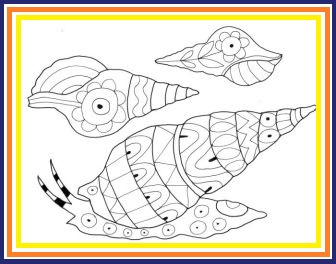
The Triton’ trumpet, also known as the buru, is a well-known sea snail, found in Greek seas.
It is a big invertebrate animal (gastropod mollusk) with an average length of 25-30 centimeters.
It was named after the son of Poseidon, Triton.
It feeds on starfish and clams and is considered a protected species.
In ancient Greece, the Minoans used the Triton as a ladle.
By opening small holes in its surface, Triton’s trumpet is believed to have been the first musical instrument used by man.
Pangolin
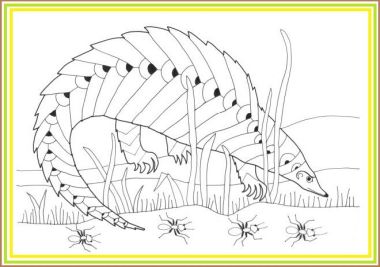
Pangolins known as scaly anteaters, are mammals of the order Pholidota (from the Greek word pholis meaning scale). They superficially resemble armadillos.
The name “pangolin” comes from the Malay word pengguling meaning “one who rolls up”.
Pangolins have large, protective keratin scales covering their skin; they are the only known mammals with this feature. They are structurally and compositionally very different from the scales of reptiles.
The pangolin’s scaled body (30 to 100 cm) is comparable in appearance to a pinecone. It can curl up into a ball when threatened, with its overlapping scales acting as armor. The scales are sharp, providing extra defense from predators.
Pangolins are nocturnal, and their diet consists of mainly ants and termites, which they capture using their long tongues.
Kingfisher
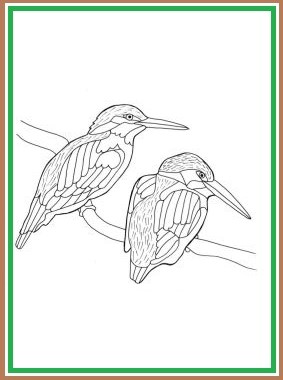
A small bird with a particularly long beak and short legs.
It has very striking colors: blue green on its back, brown on its belly, white on its neck and on the sides of its head.
It is a very fast flyer and dives vertically to catch its food.
It makes characteristic cries, not very melodious ones.
There is an ancient Greek myth about the kingfisher, hence today the halcyon days, we call the days of good weather, in mid-January.
Swan
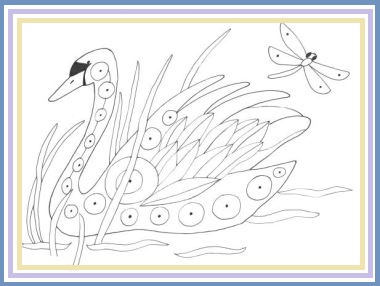
A large waterfowl bird closest relative of geese and ducks.
Its particularly long neck has more vertebrae than the rest of its family.
It flies with slow flapping of its wings and with its neck stretched out.
Its wingspan can reach the length of 3 meters!
It is a very skilled swimmer – helped by the membrane between its toes.
It feeds on worms, shells, frogs, plant roots and seeds.
Its chicks have short neck and a fluffy body.
Budger
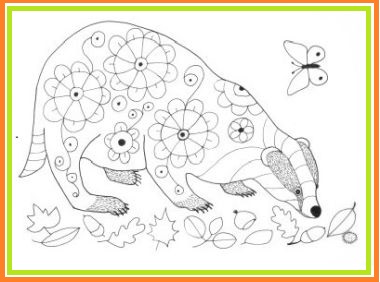
Badgers are mammals with brown-grey fur and a long tail.
They are members of a family, which also includes otters, weasels and ferrets.
The badger’s face is white, with distinctive black stripes on each side, which run from the nose to the ears. So, the badger looks like it’s wearing a mask!
It can be found in the mountains and forests of our country.
Its legs are short and strong – its claws, long and forked, help the badger to dig well. It builds its shelter underground – it lives in burrows with many corridors.
It is a nocturnal animal. Its diet consists of insects, earthworms, small reptiles, birds, mammals and fruits.
When threatened, it emits a characteristic stink smell.
Mushroom
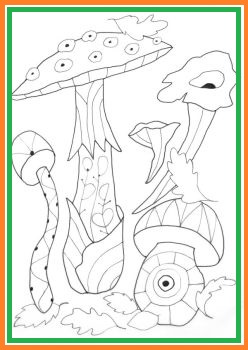
Mushrooms belong to the fungi group.
In most of them, the upper part resembles an umbrella and is called a cap, which rests on a leg called a stalk.
There is a wide variety in mushrooms, with forms of funnels, corals, etc.
The Greek word mushroom (manitari) is a diminutive of the ancient Greek “amanitis”.
A large variety of mushrooms is used in various cuisines around the world and their history is lost over time.
It is crucial to know all about mushrooms if one wants to pick and eat them, for a few of them are poisonous.
There are mushrooms that have been used in ancient times to treat several diseases.
Others have been used for dying wool and other natural fibers.
Sponge
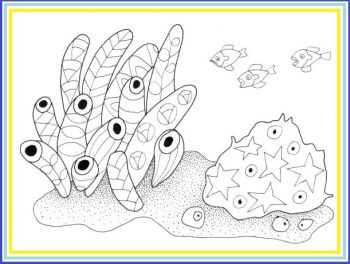
Sponges are very primitive aquatic animals.
Their bodies are full of pores and channels allowing water to circulate through them.
They are also called porifera – as they are pore bearers.
Although most sponges live in the sea, there are a few freshwater species.
Sponges are usually found at shallow depth, on firm surfaces such as rocks, but some can attach themselves to soft sediment by means of a root-like base.
They present a wide variety of colors.
They firstly appeared about 500 million years ago on Earth.
If one part of them is cut off, they can create another. This phenomenon is called regeneration.
Sea urchin
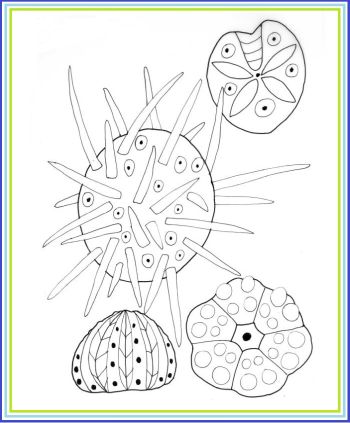
A peculiar globular animal covered by spines.
Invertebrate animal of the sea, one of the few with fivefold symmetry.
It is related to the starfish, which is also its enemy!
Most sea urchins are black, dark brown, dark green, purple and red in color.
They are small animals having a size from 3 to 10 centimeters.
Inhabiting all oceans and seas of the world.
Sea urchins move slowly, crawling with their tiny tube feet.
Grasshoper
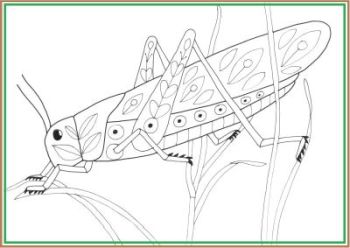
Grasshoppers are relatively large insects, that can make long jumps as they have shorter front legs and longer hind legs.
Females are usually larger than males.
They are green or brown in color.
On their heads they have two large compound eyes and very strong jaws.
We find them in warm areas.
Female grasshoppers lay around 150 eggs in autumn, which they leave in holes they dig in the ground.
In springtime, while looking for food, grasshoppers move in very large groups (swarms) and can cause enormous damage to agricultural crops.
Salamandra
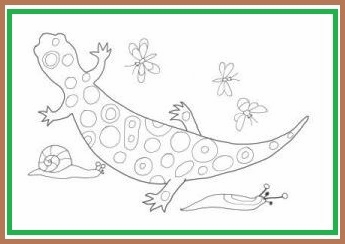
It is an amphibian, meaning it lives both on land and in water.
It is typically characterized by its lizard-like appearance.
It is mainly a nocturnal animal, but it is often seen after the rain.
It has poison on its skin, that’s why it has yellow spots that warn other animals to stay away!
Its venom is harmless to humans, unless it comes in direct contact with the eyes, mouth, or an open wound, where it causes some mild symptoms.
It can regenerate its limbs if they are cut off!
It feeds exclusively on invertebrates, such as insect larvae, worms and snails.
Zebra
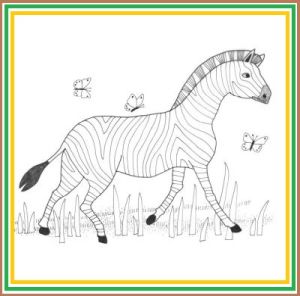
Herbivorous mammal that lives in savannahs, grasslands and shrublands of Africa.
During birth, it has brown and yellow stripes, which become a distinctive bold black and white coat in adulthood.
Each individual has unique stripes, like human fingerprints and stands out from the rest!
They usually graze in herds together with ostriches and antelopes, to better protect themselves from their enemies!
Their stripes serve as camouflage!
Jackal
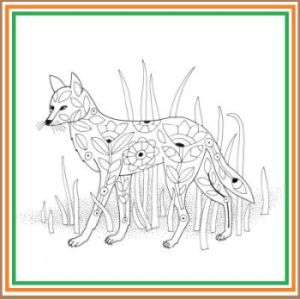
It is an omnivorous mammal, feeding on invertebrates, amphibians, reptiles, birds, small mammals and fruits.
Its presence helps a lot in cultivating areas, because it acts as a “cleaner”: it eats mice and reduces the fallen fruit and dead animals of the area it lives in.
It relates to wolf and fox.
It belongs to the Endangered species of Greece.
Jackals communicate with each other by characteristic howls after dusk.
Swallow
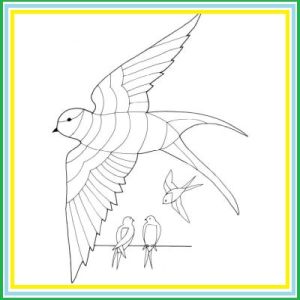
It is a small bird with narrow wings and a forked tail.
It migrates in large flocks at the end of autumn and returns in springtime.
It flies thousands of miles to get from Europe to Africa to spend the whole winter.
It feeds on small insects, caterpillars and spiders, having its mouth open while flying.
It knows the way back to the same nest it built the previous year!
To build its nest it makes lumps of mud.
One nest requires about 1000 lumps and 2 weeks of work!
Reindeer
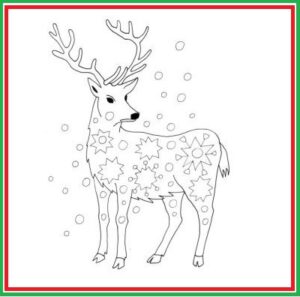
It is the favorite animal of Christmas and Santa Claus!
A herbivorous animal, characterized by its front teeth only present in the lower jaw!
It is the only species of deer that both males and females have antlers!
It has been domesticated long ago and is used by humans to pull sleds.
To withstand the cold, it has thick fur and hairy feet with wide hooves to keep it from slipping on ice and sinking in snow!
It is the only mammal that can see ultraviolet light!
Cheetah
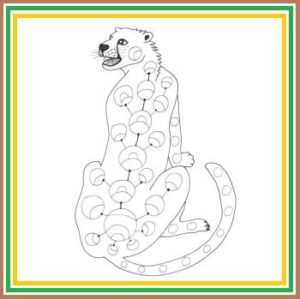
It is a carnivore mammal, belonging to the Feline family (along with the cat, lion, tiger, leopard, etc.)
It is the fastest land animal. It can reach 120 kilometers per hour, that is, as much as a car on a highway!
It gets tired easily while running so fast, so it only runs for a few minutes and then rests.
It is active mainly during the day, unlike other felines.
Cheetah is a vocal felid with a broad repertoire of calls and sounds.
Its population has declined and is threatened with extinction.
African elephant
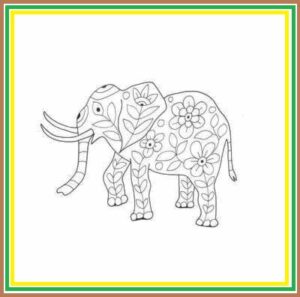
It’s the largest animal on land, weighing up to 8 thousand kilos!
They are characterized by their large ears, their long trunk and their huge tusks, which keep growing all the time!
An elephant’s trunk is used to drink water, to bathe, to pick up objects and to communicate with other elephants.
They have the longest pregnancy among mammals, which lasts 22 months, that is almost 2 years!!!
A newborn elephant can weigh 50-150 kilograms!
Elephants can live 50-70 years.
They are believed to have a very strong memory.
Seagulls
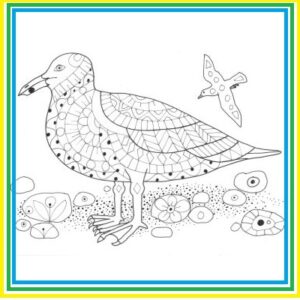
Seagulls, are seabirds, medium to large in size, usually grey or white colored.
They have stout, longish bills and webbed feet.
Seagulls have harsh wailing or squawking calls.
Most seagulls are ground-nesting carnivores which take live food including crustaceans, mollusks, fish and small birds.
They are typically coastal or inland species, nesting in large, densely packed, noisy colonies.
Gulls are resourceful, inquisitive, and intelligent, the larger species in particular, demonstrating complex methods of communication and a highly developed social structure.
Snail
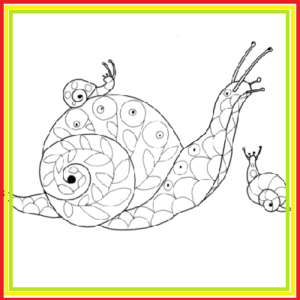
Snails are invertebrate animals, with a soft body that crawl on the ground.
They have a shell, large enough for the whole animal to hide in.
They also have 4 tentacles on their head, the taller pair baring 2 eyes on the tips.
To find food (usually grass and decaying organic matter) snails use the two smaller tentacles.
Snails propel themselves by deforming a slimy – sticky substance (called mucus) beneath their soft body.
This unique form of locomotion allows snails to traverse almost any obstacle, including the ability to climb steep inclines.
One can see snails when there is plenty of moisture, i.e after rain, or at night.
Snails seek for soft ground to dig and lay their eggs.
Weasel Mustela nivalis
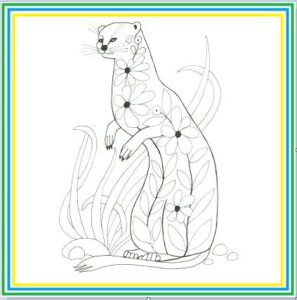
The smallest carnivorous mammal of Greece.
It is extremely mobile and mainly diurnal.
It can be found in many parts of Greece.
It prefers areas with many rodents, so it can find food.
Lives about 4 years.
The ancient Greeks and Romans kept weasels in their homes to protect them from mice.
Flamingo
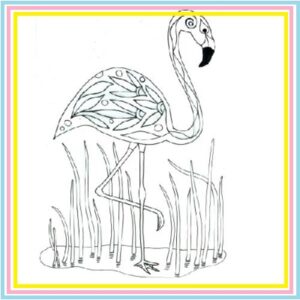
Flamingos are tall birds, with very thin legs and a very long neck.
Their name probably comes from the Spanish flamengo, which means flame –colored.
They live in shallow waters and they usually stand on one leg.
Flamingos have a strange beak and they are very noisy birds.
Their pink color comes from their diet (usually shrimps).
They are very social birds, living together in large groups.
Goliath beetle
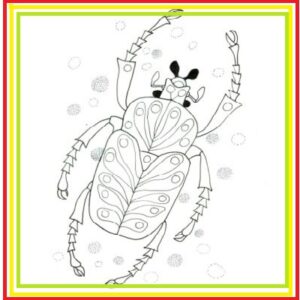
One among the largest insects on the planet, with a length of 6-11 cm in males and 5-8 cm in females!
It is found in many tropical forests of Africa!
Its larvae have a high protein diet, while adults feed on sap from acacia trees.
They can lift 850 times their own weight!
Males have a Y-shaped ‘horn’, which they use to fight other males.
Viper
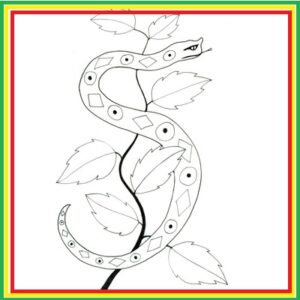
Vipers are medium sized snakes, usually less than one meter long.
On their back, vipers have dark zig-zag patterns, while on their head there is a X or V shape.
The head of a viper is triangular and easily distinguishable.
Vipers have an excellent sight – they can even see in the dark.
Their mouth has two upper large and pointed teeth, which can release venom.
Vipers do live in Greece. They are skilled climbers as well as fast swimmers.
Unlike other snakes that lay eggs, vipers give birth to 10 – 20 venomous young.
Lion
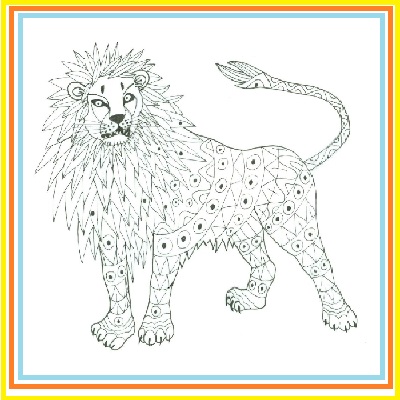
The lion along with the tiger are the largest feline mammals.
The male can reach the weight of 200 kg.
Today we find it in Africa and India.
We recognize the male by its beautiful mane that adorns its neck.
Lions live in groups, females hunting for food for all the members of the group.
It is considered as king of all animals and is one of the most recognizable species in the animal kingdom.
Ant

Ants are considered as the most hardworking insects in the world, together with bees.
They live in organized groups, with specific roles and collaborations.
Each group, called colony, has a queen, who can live up to 20 years!
Ants can carry many times their own weight.
They have an amazing communication with each other.
The anthill is a very large underground apartment building with many corridors and small rooms.
Credits for big photo Peter Cairns / naturepl.com
Wild cat
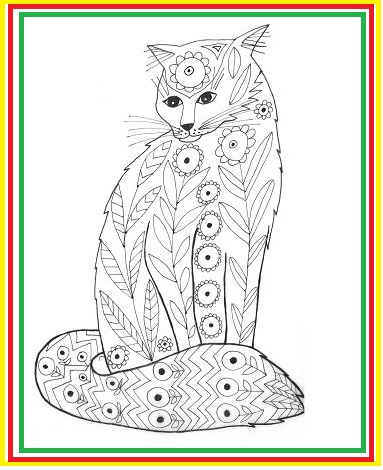
It is a mammal – it belongs to the feline family.
It can be found in Greece.
It is larger than the domestic cat, having a thick tail.
It is a nocturnal and solitary animal.
It feeds on rabbits, mice, birds, amphibians and fish.
Credits for big photo Peter Cairns / naturepl.com
Otter
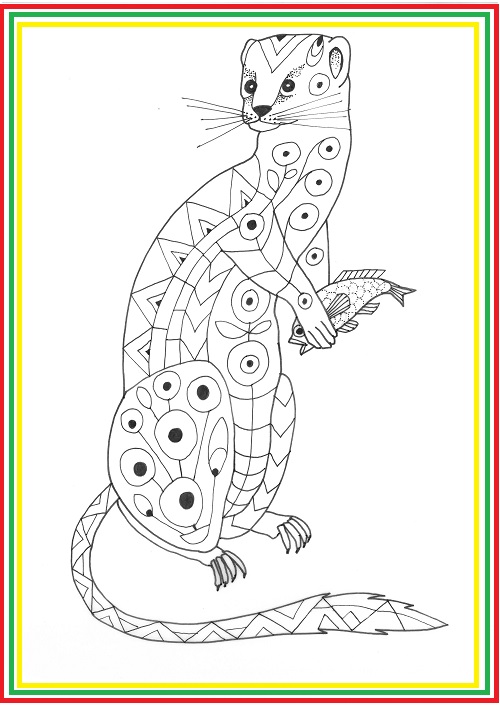
This mammal lives in wetlands (only in very clean waters) and is a very good swimmer – but also spends a lot of time on land.
It mainly feeds on fish and other aquatic animals such as crabs, crayfish, frogs, but also water snakes, small mammals and birds.
It usually hunts at night, spending the daytime in its burrow, which has an underwater entrance.
It has a very strong sight, hearing, and smell, both on land and underwater!
Its fur is waterproof and also protects it from the cold.
It belongs to the Endangered species of Greece.
Bearded vulture Gypaetus barbatus
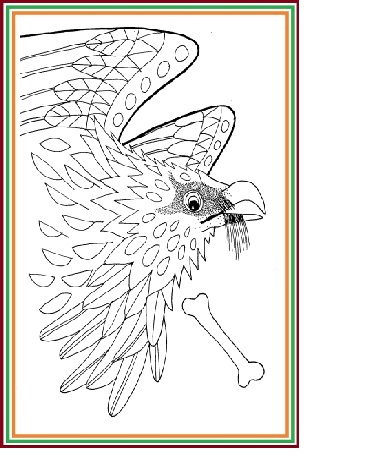
It belongs to the diurnal birds of prey along with eagles, hawks, vultures, buzzards and kestrels.
It has a particularly hooked beak and hooked claws, which allow it feeding mostly on the remains of dead animals and the marrow of their bones.
It has an excellent vision, even in conditions of reduced visibility.
It is the largest bird in Europe, with males being slightly smaller than females.
Its wingspan reaches 2.5 meters!
It is an endangered species that lives on the cliffs of our country, mainly in Crete.
Leopard
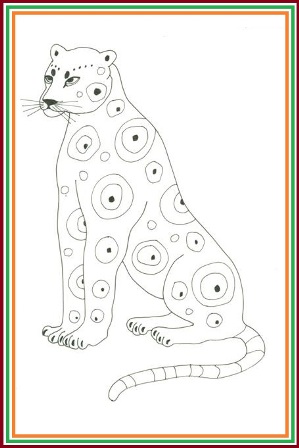
The leopard (Panthera pardus) belongs to the cat family (Felidae), together with the domestic cat, lion, tiger, jaguar, etc.
It is a carnivorous animal, with sharp teeth and strong jaws – it is active mainly from dusk till dawn and rests for most of the day.
It has the largest distribution of all wild cats, occurring widely in Africa and in tropical jungle areas of Asia.
The dark spots on its body help the leopard hide in its natural environment (they serve as camouflage).
It moves completely silently and can climb trees very skillfully.
It is a great runner and can leap up to 6 meters!
Beaver
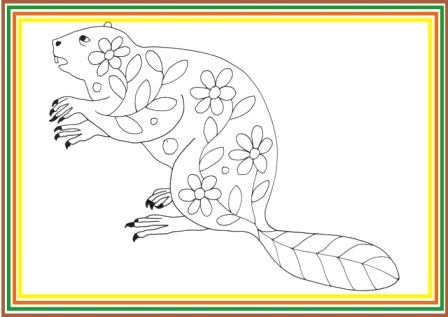
It belongs to the Rodents family, together with the mouse, the squirrel, the mole, etc.
It has waterproof, brown fur and a big wide tail which is used as a “steering wheel” in the water.
Its front teeth (incisor teeth) are big and strong. They are used to gnaw on tree trunks and brunches, to transfer them to the river or to the lake, and use them to build dams and its nest.
Its front teeth never stop growing, so the beaver needs to gnaw and chew wood in order for them to keep them in normal-size!
The entrance of its nest is underwater, which helps the beaver protect itself from predators.
Red fox
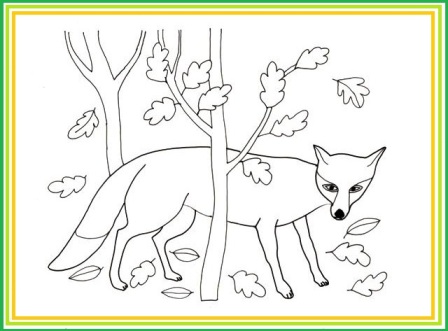
It is a carnivorous mammal and prefers to feed on rabbits, hens, mice, rats, but it is also a grapes lover!
It lives in burrows underground, where it protects itself and gives birth to its young.
When it has leftover food, the fox saves it in order to eat it when it is hungry again!
It is known to be a very cunning animal! Every time the fox returns to its nest, it follows a different route!
Greek National Day 25th of March
Red deer
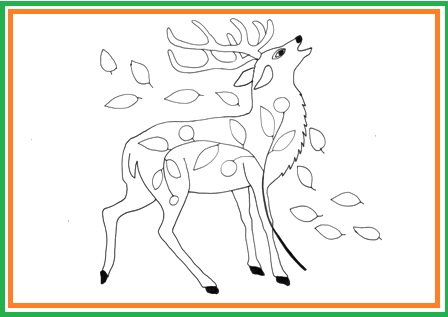
It is the largest herbivore mammal in Greece.
It lives in forests and it’s a diurnal animal (it goes around during the day and sleeps at night).
Male deer have large antlers with many branches.
It has hooves on its feet and brown fur.
Baby deer are born with white spots on their fur!
It’s an endangered species.
Squirrel
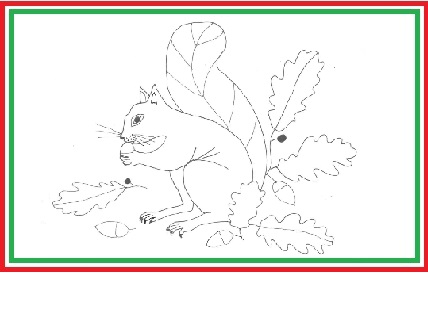
It’s a very characteristic forest rodent.
It has a long bushy tail that stays folded up its back.
It climbs trees with a remarkable speed.
Squirrels eat acorns, hazelnuts, fruit and mushrooms.
In Autumn, squirrels store food, in order to survive during winter, when food is rare.
In Greece it mainly lives in northern and western parts of the country.
Alpine chamois
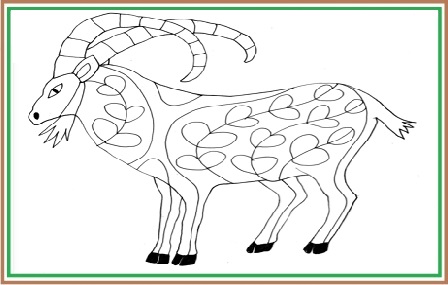
It is found in meadows and forests but also steep ravines and cliffs on Greek mountains.
It is a herbivorous animal that lives from 14 to 20 years.
It is slightly larger than a goat, having a white head and brown body.
Its feet have hard, though flexible hooves that give it a firm grip.
Both males and females have horns.
Hedgehog
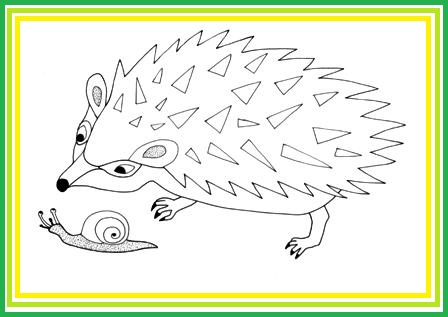
It is a small, mostly nocturnal mammal.
Its body is covered by hard spinessnails, small bir.
It feeds on insects, worms, ds, frogs, lizards and fruit.
In order to protect itself from predators, the hedgehog curls into a small, spiny ball.
In the winter, when it’s too cold and there isn’t enough food to survive, the hedgehog hibernates.
Robin
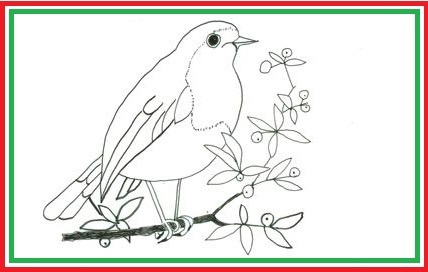
This is the bird starring in all Christmas cards!
We recognize it by his characteristic orange breast.
Despite its small size, it has a particularly aggressive behavior on the ground.
It has a very beautiful chirp, which can be confused with the nightingale’s.
While it lives in the forest, we often see it in gardens and parks looking for food.
It is related to the nightingale, the sparrow and the blackbird.
Wild rabbit
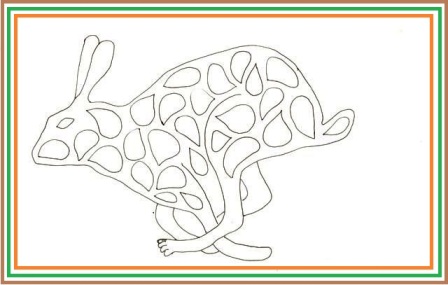
An herbivore mammal which is found all over Greece.
It is smaller than the hare, with smaller and more rounded ears with brown tips.
It digs underground burrows with many galleries and branches, in which it sleeps and gives birth to its young.
In case of danger, the wild rabbit taps the ground using its hind limbs, to alert the rest of the group, which disappear inside the underground burrow.
It is active mainly during dusk and night.
Woodpecker
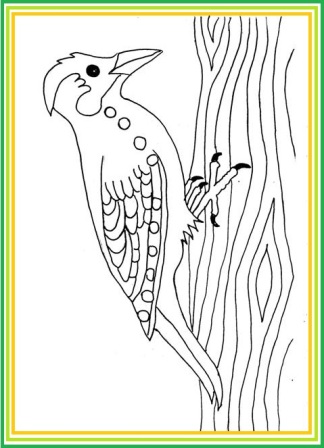
The woodpecker is a bird that lives in Greece.
It belongs to the forest birds – it prefers to spend time on tree trunks.
Two of its toes are turned backwards and the other two forwards. This enables woodpeckers to hook onto tree branches.
With its long and strong beak, it can easily find its food in the wood where it digs holes.
It hits the trunk of trees hard – it can hit a tree trunk 10,000 times a day!
It is a useful bird to farmers, because it eats many harmful worms.
Bat
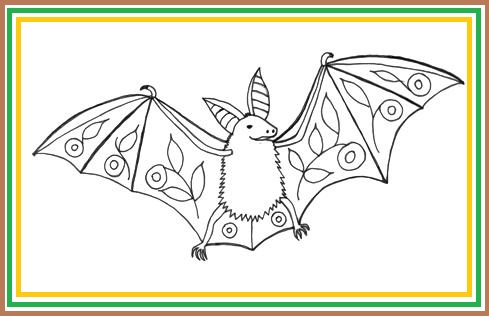
It’s a nocturnal mammal that looks like a winged mouse, however it is not related to mice and rodents in general.
It’s the only mammal capable of true flight, due to a thin membrane between the fingers of its forelimbs.
It usually hibernates during winter- this hibernation may last up to 2.5 months!
During day time when it rests, but also during hibernation, the bat hangs upside down, wrapping its “wings” around its body like a blanket!
It gives birth to a single pup in spring and the mother carries it until it can fly on its own!
Seahorse
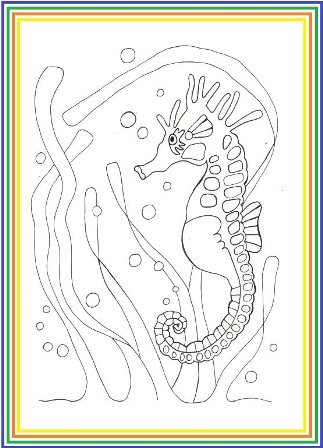
It is a fish whose head resembles a horse’s head, which is why we call it a sea horse.
It swims in an upright position, very slowly and is often caught by the algae with its tail.
The female lays the eggs in a pouch on the male’s abdomen, so the male is the one who ultimately “give birth” to the young!
He doesn’t have a stomach – food passes in and out of his body, so he has to eat constantly to survive!
A seahorse can eat up to 3000 tiny shrimps a day!
Sea horse can change color to hide and protect itself from its enemies (camouflage).
Brown bear
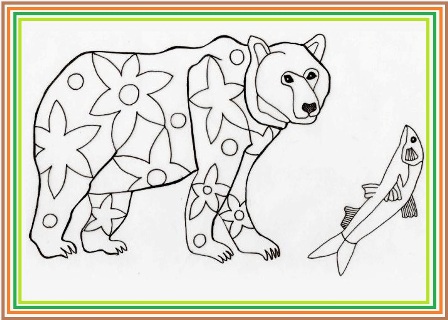
Omnivorous mammal, which is found in northern Greece, especially in the mountains of Pindos and Rodopi.
It is the second biggest bear species in the world, after the polar bear!
In autumn, it can walk hundreds of kilometers searching for food!
It hibernates during winter time, waking up in spring, when food is abundant. While hibernating, it burns its stored fat.
Bear cubs weigh just 200-300 grams at birth time!
Normally it doesn’t attack humans. It might do it, only if it senses danger for itself or its cubs.
It is considered as an endangered species, protected by an organization called Arcturos.
Chameleon
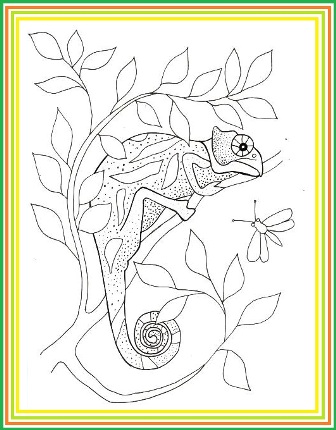
This is a distinctive reptile, a type of lizard that lives exclusively on trees, we can also find it in Greece.
It moves very slowly and uses its legs and tail to climb.
His eyes move independently. Therefore, a chameleon can look in two different directions at the same time.
Its tongue is longer than its body and sticky – so it spreads it out very quickly and grabs insects.
It has the ability to change color depending on its environment and mood (camouflage) – thus protecting itself from its enemies.
He can stay camouflaged for a whole day!
Pelican
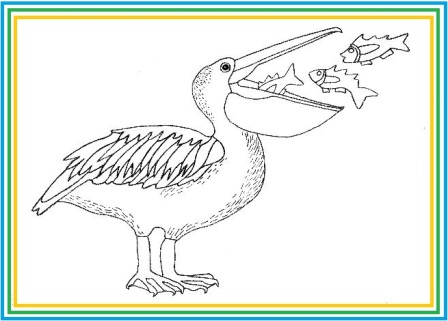
Its name comes from an ancient Greek word that means “axe”.
It is a very large seabird characterized by its long and wide beak, having a huge pouch at its lower side, which is used to catch fish and drain water before drinking it.
Females lay 3-5 eggs every year and hatch them for a month.
Upon birth, pelican chicks are black and featherless.
After about a week, the chicks are able to put their heads into their parents’ pouches and feed themselves!
Pelican parents continuously care for their chicks, which is why in ancient Greece pelicans were the symbol of a mother’s affection and commitment.
Cicadas
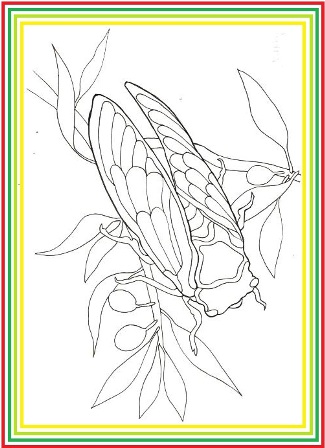
An insect that we meet and hear mainly during summer.
It feeds on the juice of shoots, which it pierces helped by a small “proboscis”.
The larva that hatches from the egg can live underground for many years – from 4 to 13, even 17, depending on the species!
Once they emerge above ground, adult individuals do not live more than 6 weeks!
The sound we hear derives from a sound device between its chest and abdomen, which looks like two small drums with a string in the middle.
In order to withstand the noise from its “singing” as cicadas produce the loudest sound of all insects, it disables its own auditory canal, preventing damage to its hearing.
Butterfly Parnassius apollo
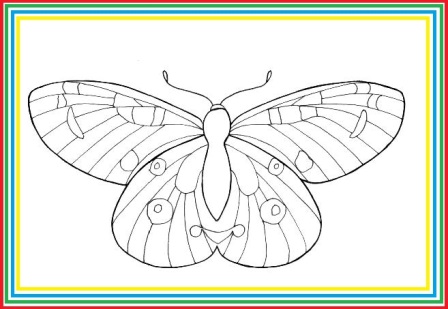
This is a rare and large mountain butterfly, usually found in high altitudes, far more present over 1.000 meters.
Its scientific name comes from the Greek Olympian god Apollon.
It only reproduces once- its eggs tolerate the cold and the small caterpillars emerge in spring.
The patterns on its wings look like eyes, confusing its predators and therefore offering the butterfly protection.
It is usually found on a specific plant that offers this butterfly a really bad taste, therefore most predators avoid consuming it!
It is usually captured by collectors due to its pretty pattern, and as a result, it has become an endangered species.
Hermite crab
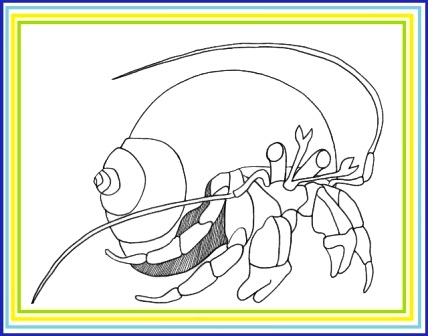
Unlike other crabs, it has a soft belly, so it needs to hide in empty shells to protect its fragile parts.
As a hermit crab grow, it requires a larger shell, so it claims it, even if there is an animal alive inside the new shell.
It often lives together with parasites, such as the parasitic anemone, which sticks to the shell, providing protection with its antennae, which work like stingers!
In Greece we often find very small hermits, but there are also larger ones.
Coral
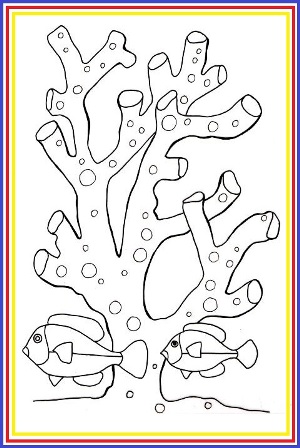
Primitive sea animals that look like a flower, that’s why they are called Anthozoa (anthos in Greek meaning flower).
It lives in large colonies, consisting of millions of identical polyps (tiny invertebrate animals that look like sea anemones).
It secretes calcium carbonate and forms a hard skeleton.
They usually cohabitate with single-celled algae (called zooxanthelles) that help them form their skeleton and give them their characteristic red color.
It reproduces by releasing vast amounts of eggs in the water, which is very impressive to watch.
Corals are rather sensitive to changes in water temperature, as well as the increase of carbon dioxide.
Rhinoceros
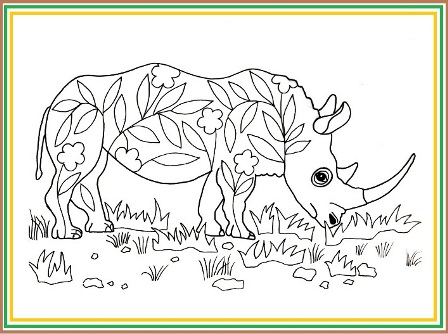
It is a large herbivorous mammal – it is found in Africa and Asia.
Its name in Greek means “horned nose” – it can have one or two horns, depending on the species.
The front horn is larger and it is used to dig to find water and plants.
It likes to roll in the mud – this is how he manages to cool off and protect his skin from the very strong sun.
The baby rhino can run three days after birth!
It is an endangered species! People in Asia kill rhinos for their horns – they grind them into powder, which they use for medicine!
Green-head duck
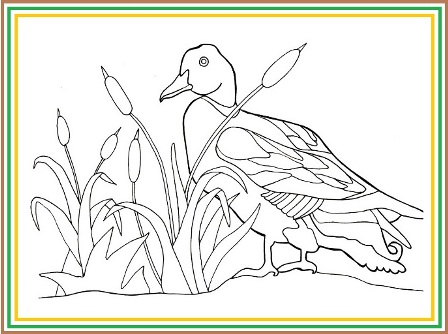
It is usually found in rivers and lakes.
It’s an omnivorous bird, eating almost everything, from seeds and aquatic plants to sea invertebrates, insects and worms.
It has a membrane between its fingers, called web, that helps it swim faster in the water and makes its legs look like… flippers!
Males and females have different colours: the male is green-headed and more brightly coloured, whereas the female is brown.
It carefully builds a protected nest that serves as an actual cote.
Females, after laying eggs, are very protective of both the eggs and the chicks after they hatch.
Golden eagle
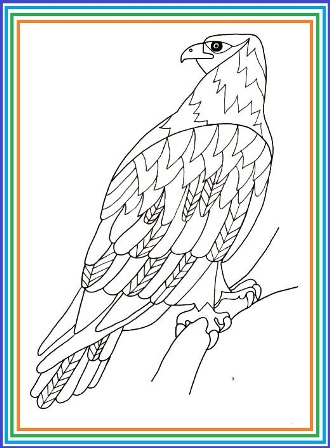
Also considered as the king of birds
The strongest bird of prey found in Greece.
It mainly feeds on birds and small mammals, such as hares, but also reptiles, such as turtles.
It can lift and carry up to 7 kg, helped but his strong claws, called talons!
It has plumage even on its feet – it looks like he’s wearing winged boots.
Golden eagles usually mate for life.
The chicks stay in the nest for 11 weeks and are cared for by the parents.
Golden eagles are fairly long-living birds in natural conditions if they survive their first few years.
Frog
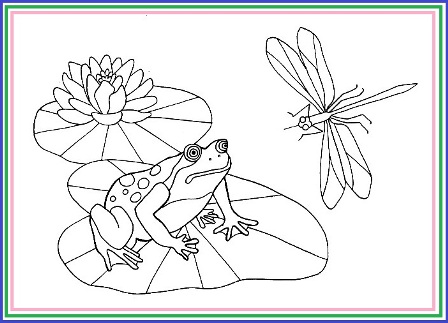
It’s an amphibian, which means that it lives both on land and in the water!
Its hind legs are larger than the front ones and have membranes between the fingers. This enables the frog to swim faster in the water and jump around on land.
Frogs mostly feed on worms and insects they capture using their long tongue.
They croak during the breeding season, but also during the night, all-year long, when there is a lot of humidity.
It has smooth skin covered in mucus, to keep it moist.
Some species have poisonous skin. These are distinguished by their bright colors
The largest frog species is the African Goliath frog, with a body length of 30 cm!
Ladybird
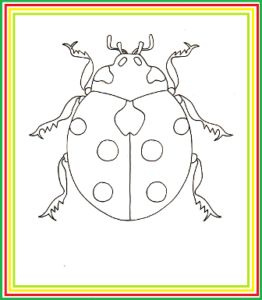
It belongs to the beetles order.
It is usually red with small black spots.
It is a very useful insect to farmers, because it feeds on aphids and other small insect pests, harmful to cultivated plants.
Due to its vivid color, it is not attractive to predators.
When it feels threatened, it releases a foul-tasting liquid.
It can eat around 5,000 aphids during its lifespan, which usually goes from 4 to 7 weeks.
Kangaroo
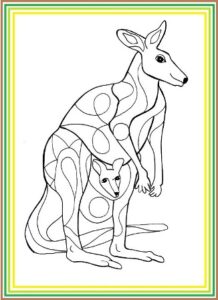
This marsupial mammal is the symbol of Australia.
The pouch, an external “pocket” on the female’s belly, is used to transfer the baby kangaroo (joey).
Joeys are born the size of our pinky finger and climb inside the pouch- they stay there for several months, until they are old enough to walk on their own.
Kangaroo mothers help their joeys find the way to the pouch by licking their belly hair to form a “map” to the pouch.
Kangaroos do not have dens, they roam around freely and jump as high as 6-8 meters!
Their long tail helps them balance- if it doesn’t touch the ground, they cannot jump!
Boa
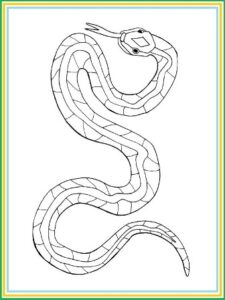
Like all snakes, it belongs to the reptile family – its entire body having a huge spine.
It has no venom, but squeezes its prey until it suffocates and then swallows it in all at once!
When a boa constrictor eats a large animal, it can take several days to digest it.
It feeds on any mammal, bird, reptile or amphibian can fit in its mouth – it also likes eggs.
It is ovoviviparous, meaning the eggs remain in the mother’s body and live young are born, which are independent soon after birth.
It is a solitary animal, which has a lifespan of 20 to 30 years.
Quetzal
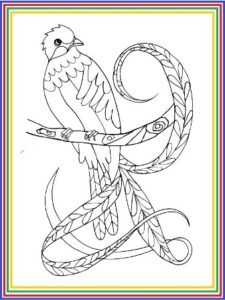
Colorful bird with striking feathers and a long tail, which lives in the rainforests of Central America.
Its name derives from the word “quetzalli” that means valuable.
This name was given to it because its feathers were considered even more valuable than gold and were worn only by kings and priests.
It is the symbol of freedom, as this bird cannot live in captivity.
It is an endangered species, as it is hunted for its beautiful feathers.
However there are laws that protect quetzals from being hunted and captured.
Koala bear
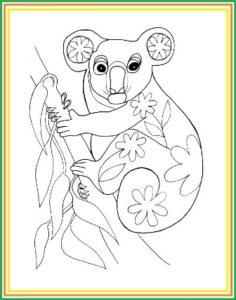
It is a marsupial mammal (the female has a pouch for the baby, called marsupial), it lives in Australia and resembles a teddy bear.
The leaves of Eucalyptus make up most of its diet – this is how it gets all the water it needs to live.
Koalas sleep up to 20 hours a day, on a tree!
The female gives birth to a tiny cub, weighing only half a gram!
The baby koala stays in its mother’s pouch for 6 months, where it grows up drinking milk. Then, for another 6 months, its mother carries it on her back, teaching it to feed on Eucalyptus leaves.
Koalas have fingerprints, which in fact are very similar to humans!
Nautilus
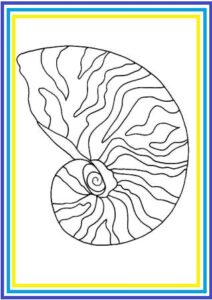
It’s an invertebrate animal that belongs to the same family as octopuses, squids and cuttlefish.
It first appeared 500 million years ago – however today there are very few nautiluses left.
Its shell looks like a snail’s shell and consists of many smaller parts called chambers.
The soft part of the nautilus looks like an octopus and is found on the outer chamber, which is the biggest of all.
The rest of the chambers help the nautilus swim in the sea: in order to sink to the bottom, it fills them with water, making it heavier- when it needs to come to the surface, it empties the water, so it becomes lighter and rises up.
Humans made the submarines, based on the way the nautilus swims, which is why the first submarine was named “Nautilus”.
Dragonfly
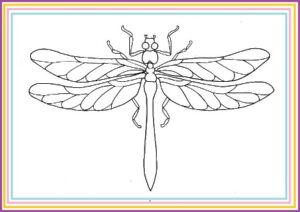
A very well-known flying insect with large eyes and a long narrow abdomen, also known as a chopper.
It lives near lakes and rivers and is often brightly colored.
It is an agile flyer, reaching 80 km per hour!
Like all insects, it has compound eyes, made up of many smaller hexagon-shaped ones, called ommatidia, which cover almost the whole surface of its head.
The dragonfly has 5,000 ommatidia in each compound eye, which makes 10,000 eyes!
Dragonflies live since the time of the Dinosaurs and were quite larger back then.
They live in a larva stage about 2 years in the water – and in an adult stage for only 1 month.
Giraffe
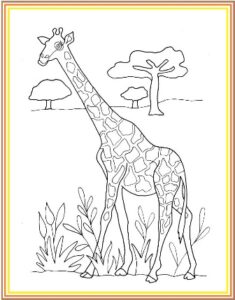
This is the tallest animal in the world! It has a very long neck, the male giraffe reaching a height of 5.5 meters, which is about the size of a two-store building.
It is an African mammal: it gives birth to baby giraffes and breastfeeds them (gives them milk).
Its gestation lasts 15 months. Upon birth, baby giraffes are 1,5m tall, which is about the same height as a 12-year-old child!
It can last many days without water. It needs to drink really fast, as it is vulnerable to predators while bending down for water.
It sleeps very few hours a day.
It has a very long, blue tongue, reaching a length of 45 cm!
Eagle owl
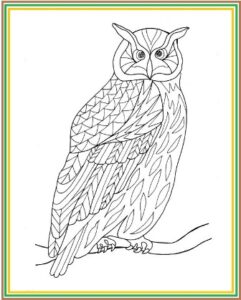
It is the largest species among owls, females being larger than males, with a particularly large wingspan reaching close to 2 meters!
It has two small feathers on its head, which look like ears – these distinguish it from its…cousin, the owl.
It is a nocturnal predator, with silent flight, but also an amazing hearing, which allow it to eat, mainly mice, small reptiles, amphibians and birds.
It can turn his head 270 degrees! So he can see almost everywhere without moving!
About twelve hours after eating, it spits out a “ball” of undigested hair, feathers and bones, known as a pellet.
Musk ox
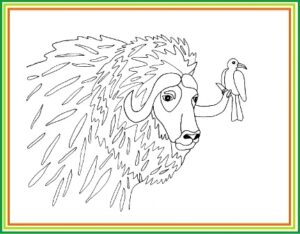
It is a herbivore mammal with wide hooves on its feet so as not to sink in the snow.
It’s native to the arctic areas, where it is extremely cold all year long.
It lives in herds with one male and many females.
Musk ox has the longest hair among all mammals!
Its fur keeps it warm and can withstand extreme cold, even in-40ο C!
Its name “musk ox” derives from the musky scent it has during mating season, that helps males attract the females.
Hoopoe
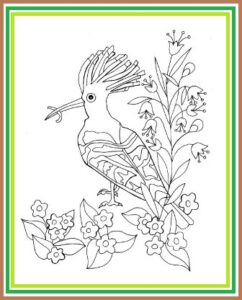
One of the most widespread birds of Greece.
It is recognizable from its special tall erectile “crest” ! When open, it is fan-shaped.
Its scientific name, Upupa epops, is … the sound of its voice.
One can meet hoopoes in forests, savannahs and meadows – they feed mainly on insects, but also worms or snails.
They spend most of the daytime on the ground – they are strong runners.
They take out a liquid that smells very bad, and smear themselves with it, so that their enemies stay away!
Hoopoes raise and lower their plume for various reasons, and like to “sunbathe” and preen their plumage.
Abalone
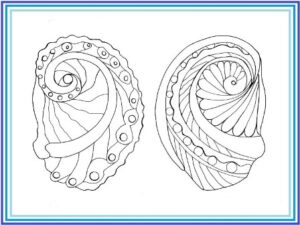
It is an invertebrate animal – its shape looks like the inside part of a human ear, therefore it is also called “sea ear or ear shell”.
Its inner surface consists of many different iridescent colours that make it very impressive!
It can reach the weight of 2 kilograms and lives up to 30 years!
It mostly clings solidly on rocks and monitors the space around it using its ciliary antennae.
It is a herbivore animal and its greatest predator is the octopus.
Triceratops
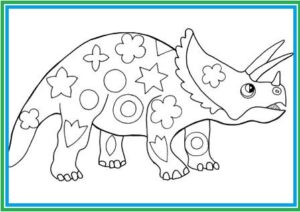
It is a dinosaur that lived during the end of the Mesozoic Era (about 200 to 60 million years ago).
It was an herbivorous dinosaur that walked on 4 legs – the largest horned dinosaur.
Its name: Triceratops, is Greek, and it derives from his 3 horns: two above his eyes and a smaller one on his nose.
Its greatest enemy was the Tyrannosaurus Rex.
It lived with other triceratops, in a group (herd) and when an enemy approached, the adults formed a circle around the young to protect them.
It is considered an aggressive animal of its time.
Mistletoe
Partridge
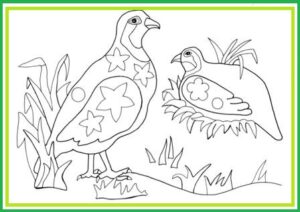
It belongs to the same group as pheasants, quails, hens and peacocks.
It feeds on seeds, nuts, worms and insects- to aid digestion, it also consumes gravels (small stones).
It flies only when in danger- actually it flies close to the ground, using rapid flutters, just like hens.
It is known to chirp early in the morning and late afternoon.
It lays eggs in spring the mothers protect and care for their chicks, which follow their mothers everywhere.
It cannot bear the cold, but it loves warm days and enjoying the sun for hours.
Monk seal
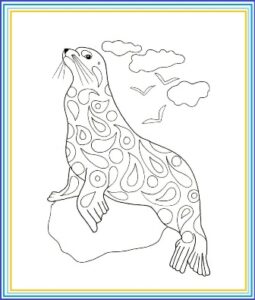
It is an endangered aquatic mammal of our planet.
The shape of its body helps the seal to move through the water – its hind legs, almost joined together, look like a strange tail!
It moves and hunts its food (mainly fish, octopuses and crabs) near the coasts.
It can make long dives lasting 5-10 minutes, (rarely 15 minutes) at a depth of 30 – 40 meters!
The female gives birth to 1 – 2 cubs that are ready to swim from the 4th day of their life!
Monk seals are found in caves in the Mediterranean sea and in Greece, especially in the Aegean sea, in Skopelos and Alonissos.
Stag beetle
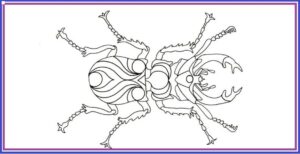
It’s an insect that belongs to the beetles (Coleoptera), a group with a hard front pair of wings that forms a structure like a shell, protecting the body.
Its scientific name (Lucanus cervus) means that the male’s mandibles (mouthparts) look like the deer (Cervus elaphus) antlers.
Males use their impressive mandibles to fight other males during mating season.
Males are about 6 cm long, while females are a bit smaller.
They normally live in oak forests and females lay their eggs inside tree trunks.
Tiger
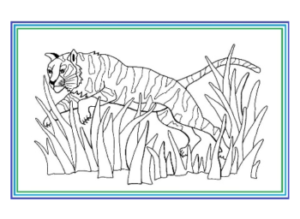
It is the largest living cat species. The male reaches the length of 3 meters (tail included) and its weight can reach 300 kg!
It is the only cat that cannot climb trees due to its weight.
Although it is a large animal, it is a very flexible one – it walks quickly and quietly.
It is a strong swimmer and makes amazing long dives!
Each tiger has unique stripes (like a fingerprints) and thus stands out from the rest. The stripes, in addition to its fur, are also present on its skin.
While hunting, it rushes at its victims from a very short distance, usually while they are drinking water.
Moth
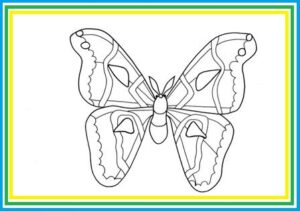
It is also called “giant peacock moth” (Saturnia pyri).
It is the largest moth in Europe, with a wingspan reaching up to 17 cm!- it also lives in Greece.
Its wing patterns look like the “eyes” on peacock wings – they protect it from predators, by creating the illusion of a much bigger animal.
Its caterpillars are green, up to 10cm long. They have hair and little spines that protect them from predators.
It has small populations and it’s a very rare moth to encounter, because it is active only at night.
Land turtle
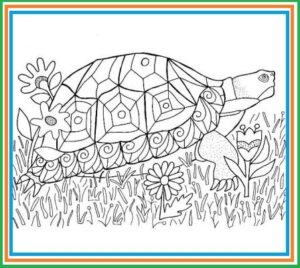
It is a reptile with 4 legs, its body being protected by the shell, called carapace, which is attached to its skeleton!
It lives for many years, while the oldest turtle we know is 176 years old!
It has no teeth and cuts its food with its pointed snout.
It has strong legs with claws, which help the turtle dig the soil.
It might hibernate for several months, especially in very cold weather.
The female lays its eggs in the summer. Hatchlings dig themselves out of the nest and find safety in vegetation without parental care.
Turtles firstly appeared on Earth about 200 million years ago!
Stork
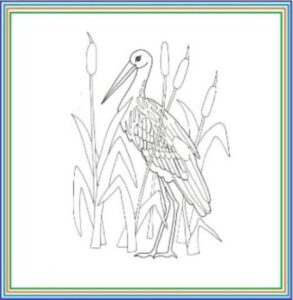
It’s a tall, black and white bird with long red legs and a long, red, pointy beak.
It prefers to build its nest high: on trees, rooftops or housetops.
Male storks carry sticks and anything that is “needed” to build the nest, while females place them to form the nest.
They mate for life. Once they form a family, one of the parents always stays in the nest to care for the chicks and protect them.
They are so quiet, that people believed they were mute! However, on rare occasions, they might hoot or whistle.
It’s a migrating bird, which means it leaves at the end of the summer in order to spend the winter in warmer areas. They always travel in flocks.
Starfish
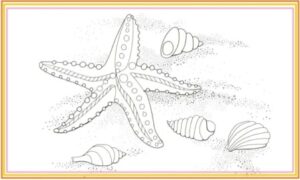
It is a marine invertebrate animal – has no bones – it has 5 arms and is star shaped.
Sea stars are found in various colors like bright red, orange, yellow and violet.
They often use camouflage to disguise their appearance, usually to blend in with their surroundings.
Although sea star is a relative of the sea urchins, it can also eat them!
In some sea stars, if one of the arms is cut off, they have the ability to regenerate the lost arm and can regrow an entire new limb given time.
Its mouth is located at the bottom of its body. It digests by turning its stomach outside its body! This is the reason it can eat larger animals than itself.
A few starfish have more than 5 arms – there have been observed even starfish with 50 arms!
Crocodile
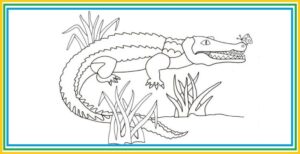
It’s a carnivorous reptile with short legs and many sharp teeth.
It has vertical slit-shaped pupils, which indicate that it is a nocturnal animal.
It has a long and strong tail that helps it swim very fast.
It spends most of his lifetime lurking in the water, until an animal approaches to drink. It then jumps and attacks it.
Its ears and nostrils are closed while the crocodile is in the water or underwater
Crocodiles are mainly found in tropical climates, both in saltwater and in freshwater.
Baboon
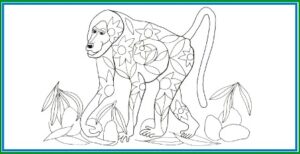
It is a primate found in the African savannah.
It is an omnivore, which means it feeds on … anything!
Baboons really enjoy playing and often ‘steal’ food from others and store it in their cheeks so they don’t lose it.
They usually climb trees to eat.
They don’t hesitate to attack large carnivores.
They open their mouth to show their large fangs, in order to frighten their hunters and other baboons.
Baboon is a social animal – it usually lives in groups of 40-80 individuals.
Crab
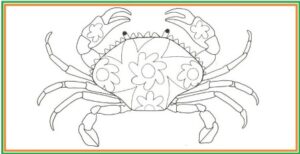
Crabs are crustaceans – they belong to the same family as lobsters and shrimps.
They have 10 legs, of which the front 2 have pincers, to catch food and protect the animal.
The body is covered by a hard shell, while it has no bones.
Crabs walk sideways, we often see them on rocks.
The female uses the abdomen as a case to carry its eggs.
Crabs vary in size. They range from a few centimeters to several meters, such as the giant Japanese crab that reaches, with outstretched legs, 3.5 meters!!

